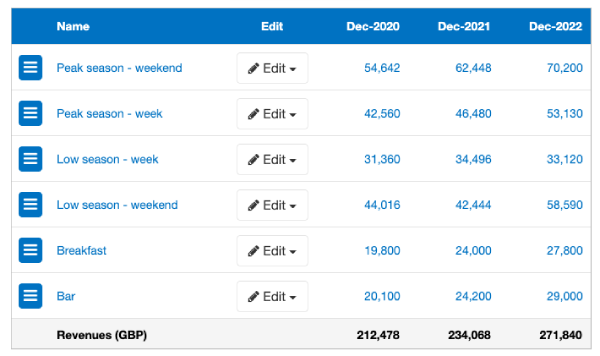
Effective financial forecasts rely on detailed models, skilled experts, strong business partnerships and connections and tools for information gathering such as financial forecasting software. The primary goal is to provide insights into future financial performance, allowing companies to make informed decisions and develop strategic plans. In a financial planning and analysis (FP&A) context, financial forecasting refers to the process of estimating and projecting future financial outcomes based on historical data, trends, and assumptions.
Forecast the Income Statement
To best prepare for unforeseen situations, engage in ongoing financial forecasting with a continuous planning platform. This allows for more effective scenario analyses that consider unexpected, worst-case market scenarios and other external factors. It also ensures data integration so your financial and non-financial data doesn’t get locked in data silos. Planful offers a centralized platform that finance and the business can communicate, collaborate to drive clear and concise business outcomes through a unified and easy to use action oriented platform. Financial modeling allows organizations to summarize a range of variables and financial information that affect the business.
Qualitative Forecasts
Businesses use financial forecasting as a strategic tool to proactively predict expected financial outcomes and undertake financial planning and risk reduction as necessary. The integrated 3-statement financial model is the most financial forecasting examples fundamental tool for FP&A. It blends together the income statement, balance sheet, and cash flow statement to forecast how operational decisions, financial changes, and investments impact projections for business performance.
Establishing realistic business goals
It’s most common for a business to conduct a forecast over the course of a fiscal year, but it’s unique for every business. And if you need to adjust your forecast as time goes by, or if your goals change, you’re ultimately in control and can make adjustments if need be. Your forecast will only be as accurate as the information you collect, so get as much relevant data as possible for better results and understanding. When you have clear intent behind your financial forecast, you’ll have a more concise and clear result to search for once you begin.
- The difference between a financial forecast and a budget boils down to the distinction between expectations and goals.
- They can simply input the data into a linear regression calculator and derive insights from the output.
- Available with or without sample text, this template lets you anticipate financial challenges and opportunities in the medium term, aiding in strategic decision-making and ensuring sustained business growth.
- Based on factors such as expenses and income, cash flow forecasting involves estimating cash flow in and out of the business across a defined fiscal period.
This is a critical tool for FP&A teams because it bridges the gap between top-line growth and recognized revenue, giving you a better understanding of your true growth rate. When you do research about broader market trends, you’re using research-based forecasting. You may look at how your industry has performed over the past ten years, investigate new technologies and consumer trends, or try to measure the progress of your competitors. You might look at how companies similar to yours have planned their own growth.

Financial forecasting is a process where a business leverages its current and past financial information to project its future financial performance. Forecasts are typically applied to assist with budgeting, financial modeling, and other key financial planning activities. On the one hand, financial forecasting entails predicting the business’ future performance. On the other hand, financial modeling entails simulating how financial forecasts and other data may affect the company’s future if everything goes according to plan.
By attempting to predict trends and conditions through qualitative and quantitative measures discussed below, companies aim to position themselves advantageously in the marketplace. Today, forecasting blends data analysis, machine learning, statistical modeling, and expert judgment. Forecasting provides benchmarks for firms, which need a long-term perspective of operations. Cash flow forecastinginvolves an estimation of the cash inflows and cash outflows of a company and its net balance over a projected period on a weekly, monthly, or yearly basis. Sales hold the key to a business’s future and form the basis for internal planning, particularly expense management, production cycles, and capital expenditure plans. It is the expected revenue from sales that requires maximisation, making sales forecasting a crucial exercise.
The platform’s automated forecasting resources effectively eliminate the stress, legwork, and room for error that often come with financial planning via spreadsheets. We’ve already give you four financial forecasting methods, so when choosing the one for your business, make sure it aligns with your previously declared purpose and goals. One method that generally falls under the statistical financial forecasting umbrella is the moving average method listed below. A company might look at the revenue it generated over the past 100 days and apply that statistic to its potential performance over the next similar period.
